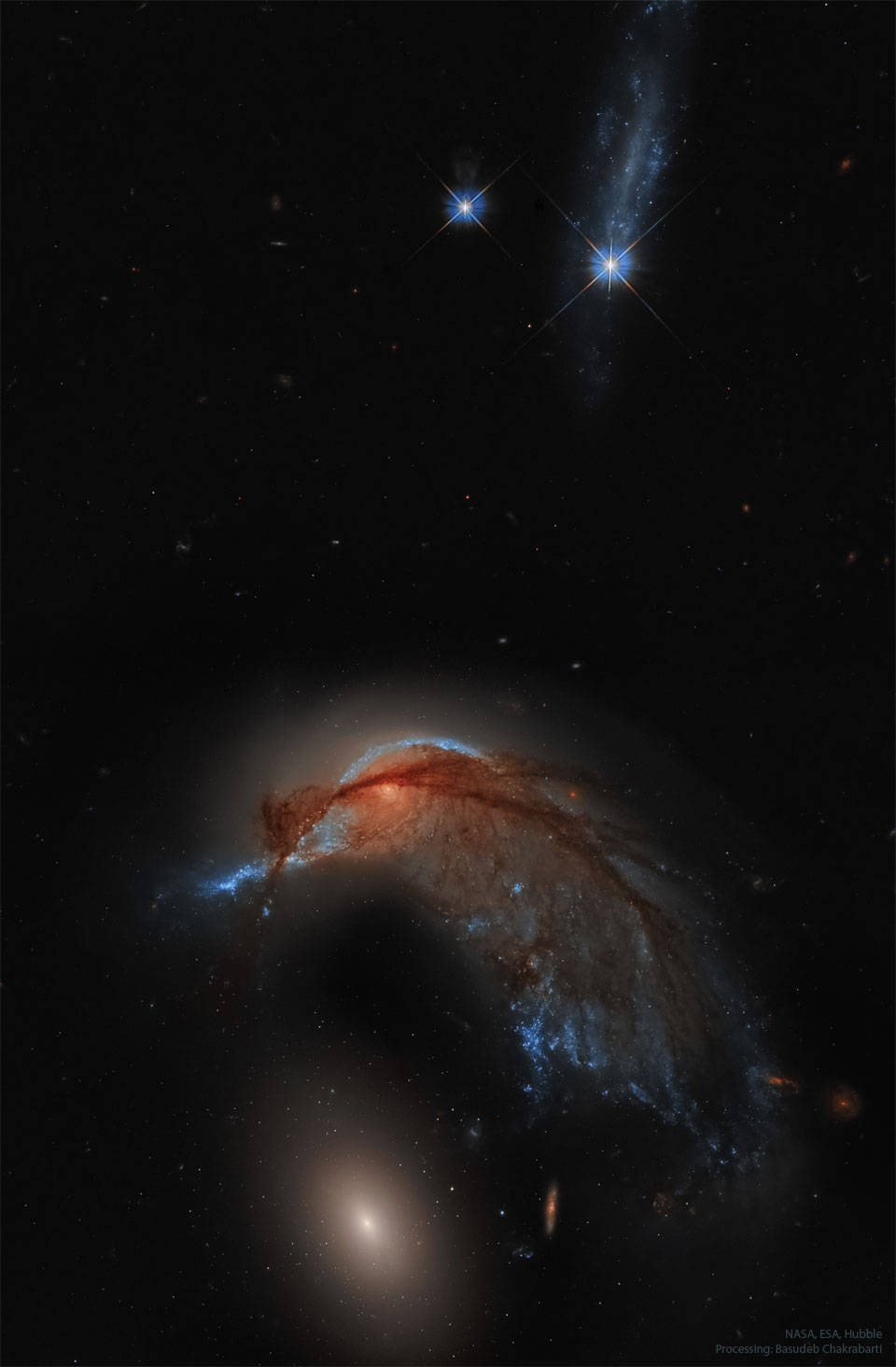Astronomy Picture of the Day
Discover the cosmos!
Each day a different image or
photograph of our fascinating universe is featured, along with a brief
explanation written by a professional astronomer.
2023 September 25

Arp 142: The Hummingbird Galaxy
Image Credit: NASA, ESA,
Hubble,
HLA; Processing & Copyright: Basudeb
Chakrabarti
Explanation: What's happening to this spiral galaxy? Just a few hundred
million years ago, NGC 2936, the upper of the two large galaxies
shown at the bottom, was likely a
normal spiral galaxy -- spinning, creating stars -- and
minding its own business. But then it got too close to the massive elliptical
galaxy NGC 2937, just below, and took a turn. Sometimes dubbed
the [Hummingbird](https://en.wikipedia.org/wiki/Hummingbird#/media/File:Ruby-
Throated_Hummingbird.png) Galaxy for its iconic shape, NGC 2936 is not only
being deflected but also being distorted by the close gravitational
interaction. Behind filaments of dark interstellar
dust, bright blue stars
form the nose of the hummingbird, while the center of the spiral appears as an
eye. Alternatively, the galaxy pair, together known as Arp
142, look to some like
Porpoise or a
penguin
protecting an egg. The featured re-processed
image showing Arp
142 in great
detail was taken recently by the Hubble Space
Telescope. Arp 142 lies
about 300 million light years
away toward the constellation of the Water Snake
(Hydra). In a billion
years or so the two galaxies will likely merge into one
larger galaxy.
Tomorrow's picture:big blue horse
< | Archive |
Submissions | Index |
Search |
Calendar | RSS |
Education | About APOD |
Discuss |
>
**Authors & editors: ** Robert
Nemiroff
(MTU) & Jerry
Bonnell
(UMCP)
NASA Official: Phillip Newman Specific rights
apply.
NASA Web Privacy Policy and Important
Notices
A service of: ASD at
NASA / GSFC,
NASA Science Activation
& Michigan Tech. U.